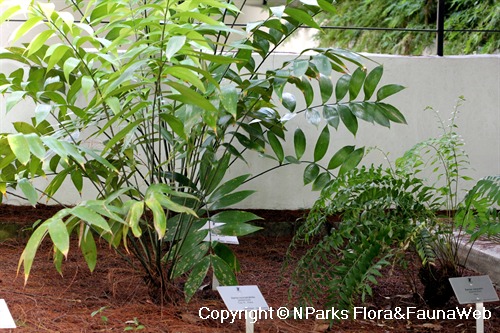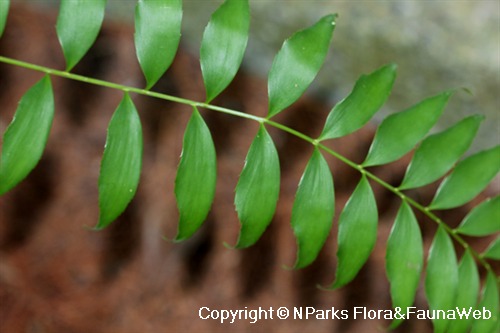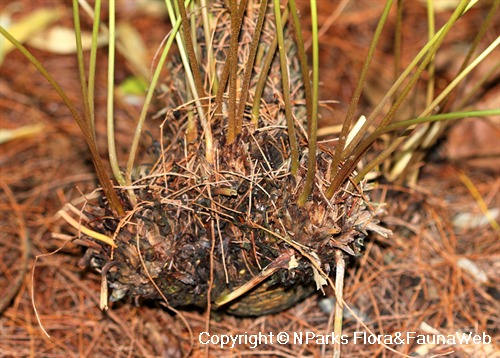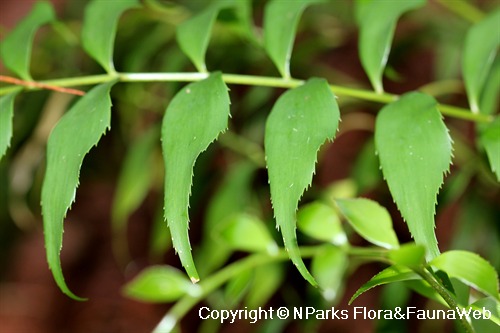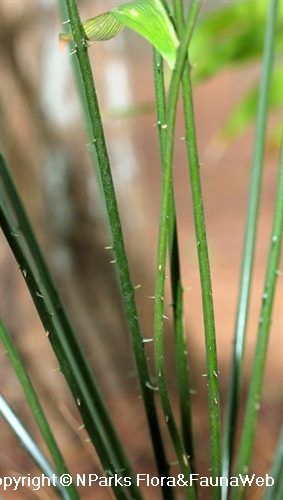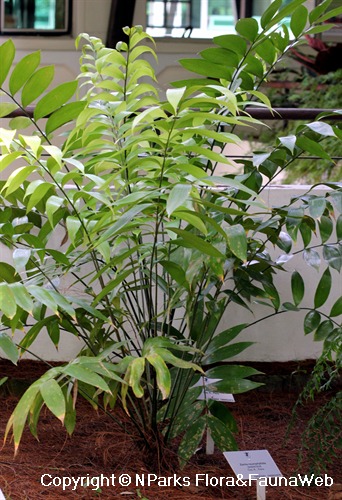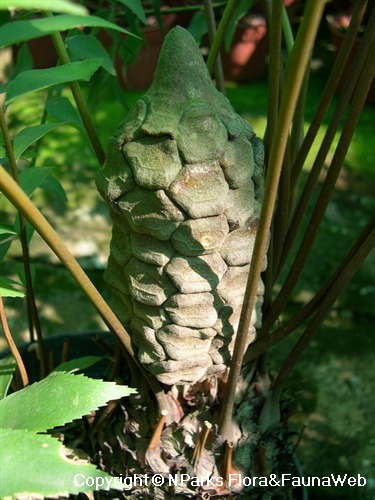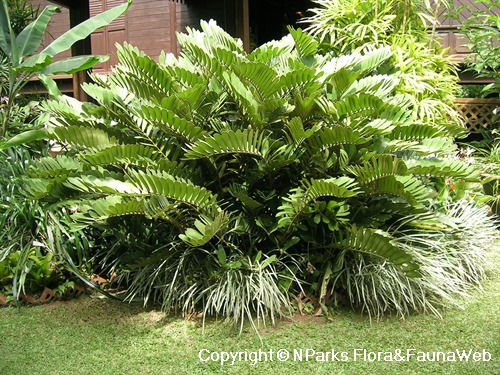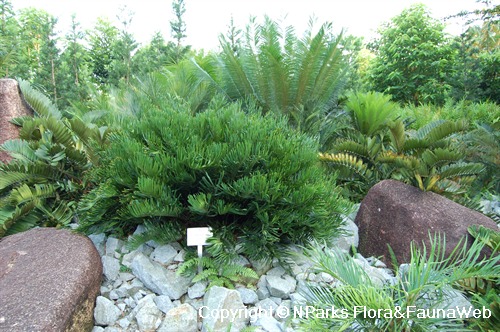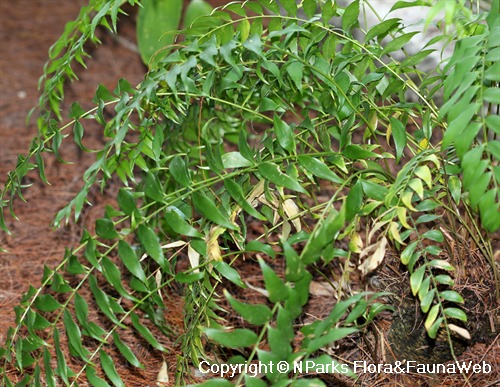
Name
Classifications and Characteristics
| Plant Division | Gymnosperms (Non-Flowering Seed Plants) (Cycad) |
|---|---|
| Plant Growth Form | Cycad |
| Lifespan (in Singapore) | Perennial |
Biogeography
| Native Distribution | Northern Veracruz, Mexico |
|---|---|
| Native Habitat | Terrestrial (Temperate Forest) |
| Preferred Climate Zone | Sub-Tropical / Monsoonal, Temperate |
| CITES Protection | True (Appendix II) |
Description and Ethnobotany
| Foliage | Up to 1m long, petioles 14-40cm long and rachis with 12-25 pairs of leaflet. Prickles on the petiole. The leaflets are thin and wide with very small teeth in the upper two-thirds. |
|---|---|
| Stems | It has subteranean, subglobose, up to 10cm in diameter. |
| Others - Plant Morphology | It is similar to Z. fischeri but has more, and longer leaves, with more than 12 pairs of leaflets on each leaf. Leaflets of Z. vazquezii are ovate to obpyriform in shape with attenuate to acuminate apices in contrast to Z.fischeri that are lanceolate with acute apices. In addition, petioles of Z. vazquezii often have small prickles whereas those of Z. fischeri are always smooth. |
| Habitat | It grows in semi-evergreen forests to pine-oak forests. |
Landscaping Features
| Desirable Plant Features | Ornamental Foliage, Ornamental Form |
|---|---|
| Landscape Uses | Parks & Gardens, Small Gardens |
| Usage Hazard - Cons | Spines/Thorns - Stem/Branch, Spines/Thorns - Leaf |
Plant Care and Propagation
| Light Preference | Semi-Shade |
|---|---|
| Water Preference | Moderate Water, Little Water |
| Plant Growth Rate | Slow |
| Rootzone Tolerance | Well-Drained Soils |
| Propagation Method | Seed |
Foliar
| Foliage Retention | Evergreen |
|---|---|
| Mature Foliage Colour(s) | Green |
| Mature Foliage Texture(s) | Glossy / Shiny, Spiny / Bristly / Stinging |
| Foliar Type | Compound (Even-Pinnate) |
Fruit, Seed and Spore
| Mature Seed Colour(s) | Orange, Red |
|---|
Image Repository
Others
| Master ID | 30804 |
|---|---|
| Species ID | 5159 |
| Flora Disclaimer | The information in this website has been compiled from reliable sources, such as reference works on medicinal plants. It is not a substitute for medical advice or treatment and NParks does not purport to provide any medical advice. Readers should always consult his/her physician before using or consuming a plant for medicinal purposes. |

